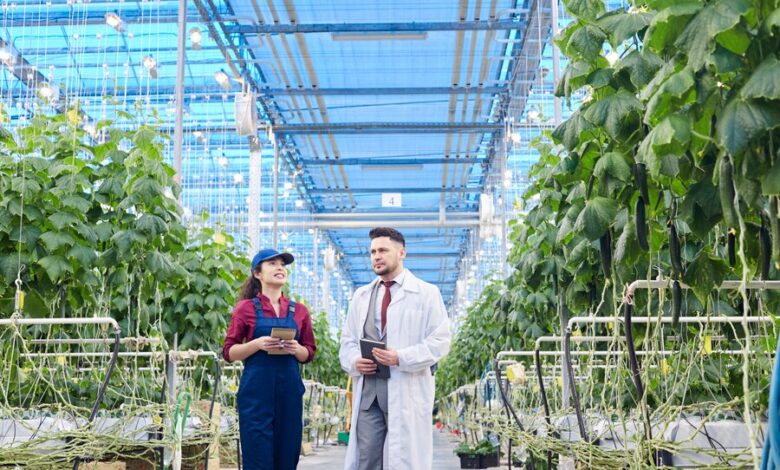
China fertilizer manufacturer plays a critical role in the country’s agricultural sector, contributing significantly to its food security and rural development. Understanding this industry’s intricacies provides insight into the agricultural backbone that supports one of the world’s largest populations.
1.1 Overview of Fertilizer Usage in Agriculture
Fertilizers are essential for replenishing soil nutrients, enhancing crop yields, and ensuring sustainable agricultural practices. They contain essential nutrients like nitrogen, phosphorus, and potassium, which are vital for plant growth. In China, the extensive use of fertilizers has been integral to achieving high agricultural productivity, especially in regions with intensive farming.
1.2 Historical Development of Fertilizer Manufacturing in China
The evolution of fertilizer manufacturing in China dates back several decades, with significant advancements post-1950s. Initially reliant on traditional organic fertilizers, the industry has progressed to sophisticated chemical fertilizers, driven by the need to support the country’s rapid agricultural expansion.
1.3 Key Players in the Chinese Fertilizer Market
Several major companies dominate the China fertilizer manufacturer market, including Sinofert Holdings Limited, Hubei Yihua Chemical Industry Co., Ltd., and China BlueChemical Ltd. These organizations are pivotal in shaping industry trends, technological advancements, and market dynamics.
2. Types of Fertilizers Produced in China
China’s fertilizer industry is diverse, producing a wide range of fertilizers to meet varying agricultural needs.
2.1 Nitrogen-based Fertilizers
Nitrogen fertilizers, such as urea and ammonium nitrate, are critical for plant growth and are the most commonly used fertilizers in China. They enhance leaf development and are crucial for crops like wheat and rice.
2.2 Phosphate-based Fertilizers
Phosphate fertilizers, including superphosphate and diammonium phosphate, support root development and flowering. They are essential for crops that require high phosphorus levels, such as potatoes and tomatoes.
2.3 Potash-based Fertilizers
Potash fertilizers, like potassium chloride and potassium sulfate, improve water retention, disease resistance, and overall plant health. They are particularly beneficial for crops like corn, soybeans, and sugar beets.
2.4 Compound and Mixed Fertilizers
Compound fertilizers combine two or more essential nutrients, offering a balanced nutrient supply. Mixed fertilizers are customized blends designed to meet specific soil and crop needs, enhancing efficiency and reducing application costs.
2.5 Organic Fertilizers
Organic fertilizers, derived from natural sources such as animal manure and compost, are gaining popularity due to their environmental benefits and sustainable nature. They improve soil structure and fertility over the long term.
3. Production Processes and Technologies
The production of fertilizers in China involves various techniques and technologies, continuously evolving to meet environmental and efficiency standards.
3.1 Traditional Manufacturing Techniques
Traditional methods include processes like the Haber-Bosch process for ammonia production and the use of natural phosphate rock for phosphate fertilizers. These methods have been fundamental in establishing the industry.
3.2 Modern Technological Advancements
Modern advancements involve the use of precision agriculture, advanced chemical engineering, and biotechnology. Technologies such as controlled-release fertilizers and microbial inoculants are revolutionizing the industry, making fertilizer application more efficient and environmentally friendly.
3.3 Environmental and Sustainability Practices
China’s fertilizer industry is increasingly focusing on sustainability, implementing practices to reduce emissions, minimize waste, and improve energy efficiency. Innovations such as biodegradable coatings for slow-release fertilizers and the recycling of industrial by-products are at the forefront of this movement.
4. Government Policies and Regulations
Government policies significantly influence the fertilizer manufacturing sector, ensuring quality, safety, and environmental compliance.
4.1 Regulatory Bodies and Standards
Regulatory bodies like the Ministry of Agriculture and Rural Affairs set standards for fertilizer quality, usage, and environmental impact. Compliance with these standards is mandatory for manufacturers.
4.2 Import and Export Regulations
China’s import and export regulations affect the global trade of fertilizers. Policies on tariffs, quotas, and quality control measures are crucial for maintaining market balance and ensuring international competitiveness.
4.3 Subsidies and Incentives for Manufacturers
The government provides various subsidies and incentives to support fertilizer manufacturers. These include financial assistance for technological upgrades, research and development grants, and tax benefits to promote sustainable practices.
5. Market Dynamics and Economic Impact
The fertilizer market in China is dynamic, with various factors influencing supply, demand, and economic contributions.
5.1 Domestic Market Demand and Supply
The domestic demand for fertilizers is driven by the vast agricultural sector, which requires consistent and high-quality fertilizer supplies to maintain crop yields. Seasonal variations and climatic conditions also impact demand.
5.2 Export Market and Global Reach
Chinese fertilizers are exported worldwide, with major markets in Asia, Africa, and Latin America. The global reach of Chinese manufacturers is supported by competitive pricing, high production capacity, and strategic trade agreements.
5.3 Economic Contributions to Rural Development
The fertilizer industry significantly contributes to rural development by providing employment opportunities, enhancing agricultural productivity, and supporting the livelihoods of millions of farmers.
6. Challenges and Opportunities in the Fertilizer Industry
The Chinese fertilizer industry faces several challenges but also presents numerous opportunities for growth and innovation.
6.1 Environmental Concerns and Solutions
Environmental concerns, such as pollution and soil degradation, are major challenges. Solutions include developing eco-friendly fertilizers, implementing better waste management practices, and promoting sustainable farming techniques.
6.2 Technological Innovations
Technological innovations offer opportunities to enhance efficiency and reduce environmental impact. Innovations like nanotechnology in fertilizers, smart agriculture practices, and precision farming are transforming the industry.
6.3 Market Competition and Pricing Strategies
Intense competition among manufacturers drives the need for competitive pricing strategies and differentiation through quality and innovation. Companies are investing in branding and customer education to build loyalty and market share.



